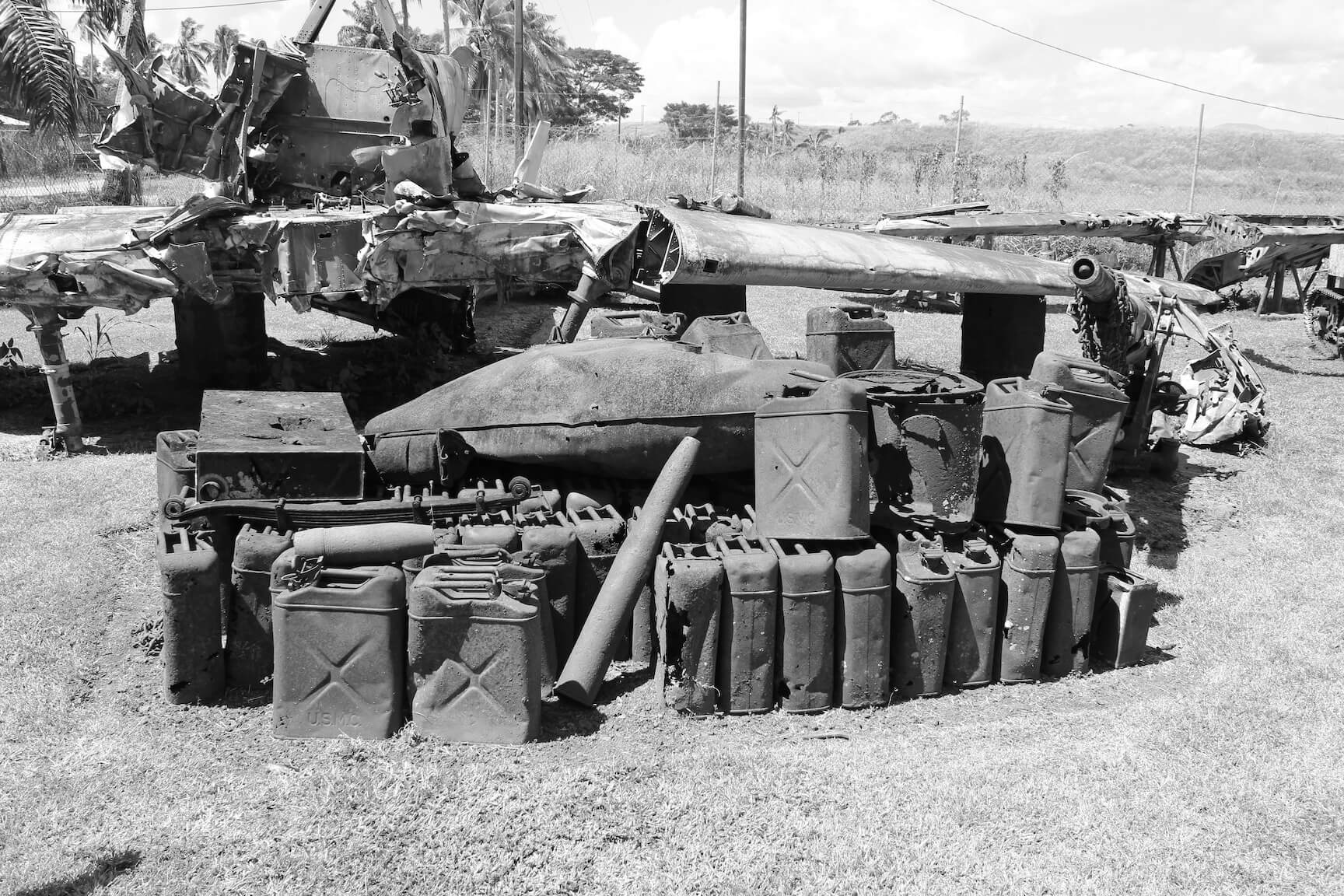Have you ever worried about the reliability of your traditional gas cans?
Until the enforcement of CARB-compliant gas cans in 2009, did you ever stop to think of a world without near-perfect fuel container design?
Trusty traditional gas cans originated from a wartime era demanding engineering excellence.
More specifically, the “Jerry Can” set the standard for portable fuel following its development in 1937 during World War II.
The “Jerry Can” was monumental to the success of the Allied forces. Its efficiency and reliability were unmatched, cementing the portable fuel container’s vital role in history and guaranteeing its place in the future of American daily life.
Keep reading to learn more about the “Jerry Can” design evolution and influence on future portable fuel cans.
New Science & Technology: Products of Wartime Necessity
The list of ways World War II permanently altered the world is seemingly endless. Changes the global conflict facilitated include monumental scientific and technological advancements.
Following the end of the war in 1945, those developments transferred to commercial goods, contributing to eventual mainstays of the post-WWII American household, including:
- Microwaves,
- Computers, and
- Gas Cans!
The Jerry Can: 1937-1945
The Ambi-Budd Presswerk (ABP) engineering firm of Schwelm, Germany, an extension of the Philadelphia-based industrial outfit, the Budd Company, developed the “Wehrmacht-Einheitskanister” or “Armed Forces Unit Canister” in 1937, preparing for the onset of WWII in 1939.
Fuel was the single most valuable resource during the conflict. Its efficient storage and transport to troops and war machines would prove a non-negotiable necessity.
The British “Flimsy” Fuel Canisters
In the early stages of the war, the British army found itself at a distinct disadvantage when faced with what would become known as the “Jerry Can.”
The British Armed Forces manufactured their four-U.S. gallon British fuel canister, commonly called the “flimsy,” from several panels of thin, non-durable steel plates welded together piece by piece.
These canisters constantly leaked, causing vehicle fires and wasting fuel. Soldiers also required a wrench to remove the cap, along with a funnel and spout to transfer fuel to a gas tank.
Soldiers found these canisters extremely uncomfortable to carry by their glorified handles, a single strip of bent steel.
The “flimsy” was costly and time-consuming to manufacture and made for inefficient transport due to the required additional tools and the uncomfortable handling of the canister for long distances.
Wehrmacht-Einheitskanister: The Precursor to the Allied Forces’ “Jerry Can”
Germany’s fuel canister’s design carried 5.3 U.S. gallons and was durable, protected against leaks, relatively cheap and fast to produce, and more comfortable and efficient for soldiers to carry.
The canister’s efficient design was also marked by the lack of a multi-step process to access and use its contents, no tools required.
The body of the can was made with two pieces of stamped steel and was topped with three rounded stamped handles, allowing soldiers to quickly carry canisters down the line (bucket brigade style) and for one person to carry up to four cans at a time.
1939: The First American “Jerry Can”
In 1939, the American engineer Paul Pleiss, who worked at ABP until the beginning of the war, got his hands on a German “Jerry Can” and the specifications of its manufacturing process.
Bringing information back to Philadelphia, Pleiss provided American military officials with the can and the manufacturing information. However, the U.S. military insisted on using World War I 10-U.S.-gallon cans before switching tactics, reverse engineering the German can.
The American “Jerry Can” was brought to life with several modifications. Its name comes from the Allied forces’ term, “Jerry,” for German soldiers, which they used to express sympathy for fellow soldiers rather than in a derogatory manner.
By 1945, over 19 million Jerry Cans had been produced to support U.S. soldiers.
The Influence of Federal Regulations
The Jerry Can set the standard for portable fuel containers. Many companies still use its design for several of their fuel can products.
Unfortunately, starting in the 1970s, fuel can manufacturers have had to deal with the pressure placed on them by intermittent national economic strain as well as new and evolving federal regulations regarding portable fuel containers.
The engineers of WWII created a near-perfect fuel can, but over time, certain government organizations have inconveniently altered the design for environmental and personal safety.
Yet, in many ways, these regulations increase the risk of fuel-related injuries and environmental pollution.
Rather than being given the freedom to create something extraordinary, engineers must work within parameters set by individuals who lack any practical knowledge of the portable fuel container industry.
Don’t Sacrifice Military-Grade Efficiency: Use EZ-POUR® Spouts
EZ-POUR® spouts ensure you get the most out of your traditional gas cans.
Use our “Application Chart” to find which spout kits work for your gas can, and visit our “Parts” page, where you can find additional products to maintain the integrity of your fuel cans or supplement any resources you may need, like a push-in vent and vent sealer.
Sometimes we get things right the first time around.
We’re here to help you avoid the hassle and frustration of new gas cans. We’re here to make and keep your gas can great!

